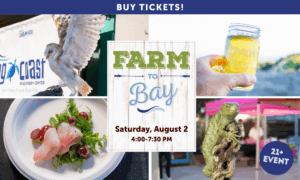What’s the Deal with Sharks?
By Lindsay Bradshaw, Animal Care Manager
🎵“ They say I’m the tyrant of the sea. Everyone, everyone’s afraid of me. I wish I could see just what they see. Does anyone have a mirror? I think of myself as cuddly! As cute and nice as a shark can be. But people scream when they see me… does anyone have a mirror? Even when I smile most graciously, everyone, everyone swims from me. I wish I could see just what they see. Does anyone have a mirror?”🎵
They say I’m the tyrant of the sea. Everyone, everyone’s afraid of me. I wish I could see just what they see. Does anyone have a mirror? I think of myself as cuddly! As cute and nice as a shark can be. But people scream when they see me… does anyone have a mirror? Even when I smile most graciously, everyone, everyone swims from me. I wish I could see just what they see. Does anyone have a mirror?”🎵
I like to think of this little song when I talk about sharks. Sharks, like some other animals, have a bit of a bad reputation. For example, think of the killer whale: an animal that in the past was feared for its violent hunting techniques. But opinions change with knowledge and now orcas (another name for killer whales) are one of the most beloved animals in the ocean. People go out on tours and pay a lot of money for just the chance to see one in the wild. Now, there are shark enthusiasts and shark tours out there too. A select few adrenaline seekers might find themselves getting lowered into the ocean in a cage which is then surrounded by sharks. But that certainly is not everybody’s idea of a good day.
Sharks get their bad reputation mainly from movies and the media. It is true that some sharks are more likely to bite a human than others, but out of the ~475 known species of sharks in the ocean, the vast majority are small and harmless and only about 10-12 are actually known to pose a threat to humans. In fact, the largest fish in the sea is a whale shark, who happens to be a peaceful plankton eater. Most reported cases of shark attacks are due to mistaken identity. The water near shore is often murky and a human can be mistaken for a marine mammal like a seal as they surf or play in shallow water near the shore. Sharks do not want to eat humans. We aren’t a natural source of food for them. Sharks have been around on Earth for over 400 million years. Modern day humans have only been around for about 200,000 years. We just aren’t part of their diet. We don’t have enough fat on our bodies to be of much use for a shark. They are looking for plump seals, sea lions, turtles, and fish to munch on. They need high calorie food to survive.
At the Living Coast Discovery Center, we exhibit four different species of shark (leopard sharks, smoothound sharks, swell sharks, and horn sharks), all smaller than 6 feet and no danger to humans. In fact, if you book a Shark and Ray VIP tour, you actually get to go behind the scenes and touch a real live juvenile shark! For some people, this is a once in a lifetime opportunity! During our public talks, we try our best to educate people about sharks and the threats to them in the ocean. Sharks play a very important role in the ecosystem and the food chain as apex predators and without them, the balance of all life in the ocean would change. Millions of sharks are killed each year by humans but the truth is that coconuts kill more people each year by falling on their heads. I bet no one would admit to being afraid of coconuts though!
We hope that through education we can change the perception people have of sharks so they may be inspired to help protect them. Sharks need our help, and that help begins with you! When someone flinches at the mention of sharks, share with them your knowledge and together we can help save these amazing animals!

Lindsay Bradshaw is the Animal Care Manager at the Living Coast Discovery Center. She has worked for several animal-focused organizations, including Birch Aquarium at Scripps, Nature and Raptor Center of Pueblo, Maui Ocean Center, and the Vancouver Aquarium.
